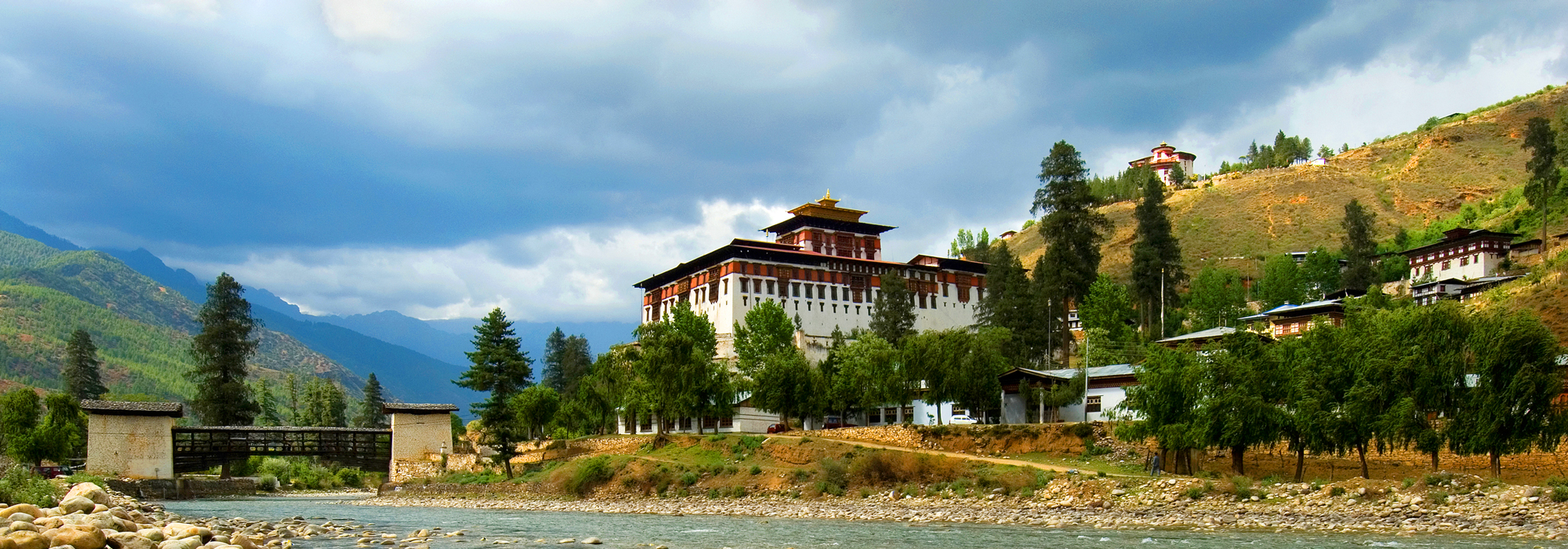The western circuit comprises of the six western Districts in the country that includes Thimphu, Paro, Haa, Wangdue Phodrang, Punakha and Gasa. What makes this circuit special is that the Tourism Council of Bhutan has categorized new ways of exploring the existing great sights.
In this circuit you can attend the summer festival of Haa and delve into the wonders of the ancient living culture of the Haaps (People from Haa). The festival highlights Shamanic rituals and other folk dances. You may also enjoy the beauty of rare Himalayan flowers in bloom or take a daring trek to Nob Tsonapatra, immersing you in the interesting legends of the area.
In Thimphu you can witness the newly introduced Takin Festival, MICE & GNH conferences, meditation and wellness facilities. You can also visit temples, dzongs (fortresses) and museums or attend a textile festival that brings to life the rich culture of Bhutanese weaving.
You’ll marvel at the historical depiction of medieval Bhutanese warriors who defended Bhutan with swords and shields during the Punakha Tsechu/festival. The various festivals are scheduled throughout the year and trips can be tailored in accordance.
Experience the plantation of rice in early summer or the harvests of the same in autumn. The golden hue of ripening rice fields is a photographers’ delight in autumn. Western Bhutan is home to some of the country’s finest museums, and you’ll not want to miss the opportunity to learn about our storied history and traditional culture. Paro museum (Tadzong), displays hundreds of artifacts revealing the history and culture of Bhutan, In Thimphu, let the Folk Heritage museum enthuse you with an in-depth look into a typical farmers’ livelihood.
Gasa
Gasa, the northernmost district of the country adjoins the districts of Punakha, Thimphu and Wangdue Phodrang and with Tibet to its north. This starkly beautiful region with elevations ranging from 1500 to 4,500 metres experiences extremely long and cold winters and short but beautiful summers.
It has the smallest population with just about 3000 inhabitants. This region is inhabited by the Layaps, nomadic herders with a unique culture. Their main sources revenue come from trading products made from their yaks, such as yak hair textiles, cheese, butter and yak meat.
Haa
Located in South West of Paro and covering an area of roughly 1706 sq. km. Haa is the smallest Dzongkhag in the country. This tiny region is one of the most beautiful and isolated areas in the kingdom, adorned with pristine alpine forests and tranquil mountain peaks.
Haa is the ancestral home of the Queen Grandmother and the illustrious Dorji family. This valley remains one of the least visited areas in the country and retains the air of an unspoiled, primeval forest. The wooded hills of Haa provides an ideal location for hiking and mountain biking.
Paro Valley
The beautiful valley of Paro encapsulates within itself a rich culture, scenic beauty and hundreds of myths and legends. It is home to many of Bhutan’s oldest temples and monasteries, National Museum and country’s only airport. Mount. Chomolhari (7,314m) reigns in white glory at the northern end of the valley and its glacial water plunge through deep gorges to form Pa Chhu (Paro River). Paro is also one of the most fertile valleys in the Kingdom producing a bulk of the locally famous red rice from its terraced fields.
Punakha
Punakha sits in a sultry, fertile and beautiful valley at the junction of the Mo Chhu (Female River) and Pho Chhu (Male River). Commanding the river junction is the gorgeous Punakha Dzong, perhaps Bhutan’s most impressive building. Punakha served as Bhutan’s first capital and for over 300 years. The first king was crowned here in 1907 and the third king convened the Bhutan National Assembly here for the first time in 1952. In 2008 the fifth and current king underwent a secret ceremony in the dzong, receiving the royal raven crown, before proceeding to a formal coronation in Thimphu. Also at present it serve as winter capital for Je Khenpo (chief abbot of religion) and for few hundred monks. The low altitude of the Punakha valley allows two rice crops a year, and oranges and bananas are in abundance. Punakha also has one of the most famous festivals in the country, the springtime domchoe, dedicated to the protector deity Yeshe Goenpo (Mahakala).
Thimphu
The Kingdom’s capital city is home to approximately 100,000 inhabitants including the Royal family. This bustling little city is the main center of commerce, religion and government in the country.
Thimphu is the most modern city in Bhutan with an abundance of restaurants, internet cafes, nightclubs and shopping centers, however it still retains its’ cultural identity and values amidst the signs of modernization.Thimphu is one of the few towns in Bhutan that have been equipped with ATM banking facilities and is a good place to stock up on some currency.
Wangduephodrang
Wangduephodrang is one of the largest dzongkhags (districts) in the country. As the district covers 4,308 sq km and ranges from 800-5800 m in altitude it has extremely varied climatic conditions ranging from Sub-Tropical forests in the south to cool and snowy regions in the north.
One of the most notable sites in the district is Phobjikha Valley. This valley is the habitat of rare and endangered Black Necked Cranes that roost there during their annual migrations.

